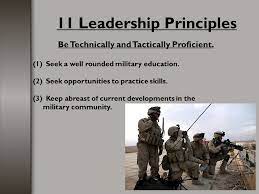4 Styles of Leadership You Probably Haven’t Thought About
Leadership is one of the most important skills a person can have. It can help you get things done, motivate your team, and build trust with others. But what are the different types of leadership?
There are four main styles of leadership: authoritarian, charismatic, consultative, and democratic.
Authoritarian leaders are directive and assertive. They make decisions without consulting others and expect their team to follow their orders without question. They may be good at getting things done quickly, but they can also be tyrannical and insensitive to other people’s feelings.
Charismatic leaders are persuasive and empowering. They inspire their team by showing confidence in their abilities and communicating positively about the goals they want to achieve. However, they may be less reliable than authoritarian leaders in terms of delivering on promises, and they can be more likely to put themselves first.
Consultative leaders are balanced between directive and consultative styles. They take input from their team before making decisions, but they reserve the right to make decisions on their own if necessary. They are good at building consensus among teams members and helping them find common ground.
Democratic leaders promote collaboration and participation from all team members. They rely on consensus rather than authority to make decisions, foster open communication between team members, and allow for dissenting opinions when necessary. Democratic leaders can be more challenging to work with than other types of leaders, but they are often better equipped to deal with change because they understand its importance
authoritative leadership style
Authoritative leadership is characterized by a clear vision and strong authority. Leaders who exhibit authoritative style are often decisive, assertive, and confident. They give orders with conviction, and expect their followers to follow without question.
There are four main styles of authoritative leadership: autocratic, coercive, democratic, and integrative.
Autocratic leaders are the most direct and forceful of the four styles. They operate using a one-way communication style in which they give orders and expect their followers to immediately obey. This type of leader is often unpredictable and domineering, making it difficult for subordinates to develop trust or confidence in them.
Coercive leaders use force or intimidation to get their followers to comply with their commands. They are usually demanding and have a limited ability to understand or empathize with their followers. This can lead to conflict between leaders and followers, as well as resentment on the part of those who feel forced to obey.
Democratic leaders rely on persuasion rather than coercion to get their followers to do what they want. They are patient and understanding, and try to create a positive environment in which people can work together effectively. However, this type of leader can also be ineffective if they do not have the backing of the majority of their followers.
Integrative leaders combine elements of all four styles in order to create an effective leadership style that works best for their particular situation. They are able to empathize with their followers while still being firm enough to demand

haitian leadership
There are many ways to lead, and each has its own advantages and disadvantages. But if you want to be successful in your career or manage a team, you need to understand some of the more common styles of leadership.
The four styles of leadership are autocratic, charismatic, democratic, and consensus-based.
Autocratic leadership is based on the idea that one person can make decisions alone without input from others. This type of leadership is typically used when there is a clear leader who can set goals and direct the team toward them. autocrats are often effective in situations where they have a lot of authority and little responsibility.
Charismatic leadership is based on the belief that people are drawn to leaders who have qualities such as charisma and persuasiveness. The leader must exude these qualities in order to be successful. Charismatic leaders can be effective in situations where they have a lot of support from their team members and can create a sense of unity among them.
Democratic leadership is based on the idea that everyone on a team has an equal say and should be able to influence decision making. This type of leadership is typically used when there is no clear leader or when the leader has limited authority. Democratic leaders must ensure that all members of their team feel respected and able to contribute their own ideas.
Consensus-based leadership relies on the agreement of all members of a team before decisions can be made. This type of leadership is typically used when there






